Sergei Poteryaev
Curated by Irina Kudryavtseva
Curated by Irina Kudryavtseva
Ekaterinburg
Local photographer and artist
Selected awards:
2017 Russian Government Scholarship for Young Artists
2016 Winner, International photography competition "Wortimbild", Klagenfurt, Austria
2013 Grand Prix: Cortona On The Move "OFF Circuit prize", Cortona, Italy
2013 Grand Prix: 5th International youth photography competition "Young man in the 21st century", Kaunas, Lithuania
2013 TOP PICK 2012 Prize, Toronto, Canada
2010 Winner, Young photographers of Russia, N. Novgorod, Russia
Personal exhibitions:
2017 2017 "Insight", Galerie in ehemaliger Schlecke, Kiel, Germany
2017 "[POST]industrial Ural", Metenkov's House museum of photography, Ekaterinburg, Russia
2017 "Cuba de Rusia", ZIL Cultural centre, Moscow, Russia
2017 "Insight", d|d contemporary art gallery, Dusseldorf, Germany
2017 "Staraya Utka", OkNo gallery, Chelyabinsk, Russia
2017 "Cuba de Lituania", Klaipeda Culture Communication centre, Klaipeda, Lithuania
2016 "Kolomna CREW, museum and artist-residence "Artkommunalka", Kolomna, Russia
2016 "Staraya Utka", Underdog gallery, Hamburg, Germany
2016 "Insight", Alte Feuerwache Loschwitz e.V., Dresden, German
2016 "Staraya Utka", Berlin Art School, Berlin, Germany
2015 "[POST]industrial Ural", Art-platform "Gate", Kaliningrad, Russia
2015 «Cuba de Rusia», Cultural Transit Foundation, Ekaterinburg, Russia
2015 "North Line", Ekaterinburg museum of fine art, Ekaterinburg, Russia
Selected awards:
2017 Russian Government Scholarship for Young Artists
2016 Winner, International photography competition "Wortimbild", Klagenfurt, Austria
2013 Grand Prix: Cortona On The Move "OFF Circuit prize", Cortona, Italy
2013 Grand Prix: 5th International youth photography competition "Young man in the 21st century", Kaunas, Lithuania
2013 TOP PICK 2012 Prize, Toronto, Canada
2010 Winner, Young photographers of Russia, N. Novgorod, Russia
Personal exhibitions:
2017 2017 "Insight", Galerie in ehemaliger Schlecke, Kiel, Germany
2017 "[POST]industrial Ural", Metenkov's House museum of photography, Ekaterinburg, Russia
2017 "Cuba de Rusia", ZIL Cultural centre, Moscow, Russia
2017 "Insight", d|d contemporary art gallery, Dusseldorf, Germany
2017 "Staraya Utka", OkNo gallery, Chelyabinsk, Russia
2017 "Cuba de Lituania", Klaipeda Culture Communication centre, Klaipeda, Lithuania
2016 "Kolomna CREW, museum and artist-residence "Artkommunalka", Kolomna, Russia
2016 "Staraya Utka", Underdog gallery, Hamburg, Germany
2016 "Insight", Alte Feuerwache Loschwitz e.V., Dresden, German
2016 "Staraya Utka", Berlin Art School, Berlin, Germany
2015 "[POST]industrial Ural", Art-platform "Gate", Kaliningrad, Russia
2015 «Cuba de Rusia», Cultural Transit Foundation, Ekaterinburg, Russia
2015 "North Line", Ekaterinburg museum of fine art, Ekaterinburg, Russia

Sergei Poteryaev
Art historian, curator, head of the Contemporary Art Department of the Ekaterinburg Museum of Fine Arts. Since 2012, Irina has been lecturing at the Department of Art History and Museum Studies of UrFU.
Selected exhibitions and projects: "Krasil Makar. The artist's story told by himself" (part of the Artist-in-Residency program of the 5th Ural Industrial Biennale of Contemporary Art, 2015); "The graphical newspaper report of Nikolai Avvakumov" (2019–2020, EMFA); "Museum: Participant Observation" (with Daria Kostina, 2017, EMFA); "BEST OF BEST. At the construction site of a new life of the Urals" (2017, EMFA); "Through the Wall. Graphics of emigrant artists of the second half of the XX century "(2016, EMFA); Leonid Tishkov's solo exhibition "Look at your house" (2015, EMFA); "Personally for Everyone" (2015, EMFA); Fedor Telkov and Sergey Poteryaev's exhibition "North Line" (2015, EMFA); Cristina Maldonado's installation-performance "Interruptor: The Stranger Gets a Gift" (2014, EMFA); "Workshop 3:0" (2013, EMFA); "2012: New Circumstances" (with Vladimir Seleznyov, 2012, UF NCCA); "The First on Mars" (with Vladimir Seleznyov, 2011, NCCA UV).
Awards and competitions: Nominee of the "Innovation" State Prize in the field of contemporary art (2013); Laureate of the Governor of Sverdlovsk region prize (2015); Scholarship of the Association of Art Critics of Russia (2016).
Selected exhibitions and projects: "Krasil Makar. The artist's story told by himself" (part of the Artist-in-Residency program of the 5th Ural Industrial Biennale of Contemporary Art, 2015); "The graphical newspaper report of Nikolai Avvakumov" (2019–2020, EMFA); "Museum: Participant Observation" (with Daria Kostina, 2017, EMFA); "BEST OF BEST. At the construction site of a new life of the Urals" (2017, EMFA); "Through the Wall. Graphics of emigrant artists of the second half of the XX century "(2016, EMFA); Leonid Tishkov's solo exhibition "Look at your house" (2015, EMFA); "Personally for Everyone" (2015, EMFA); Fedor Telkov and Sergey Poteryaev's exhibition "North Line" (2015, EMFA); Cristina Maldonado's installation-performance "Interruptor: The Stranger Gets a Gift" (2014, EMFA); "Workshop 3:0" (2013, EMFA); "2012: New Circumstances" (with Vladimir Seleznyov, 2012, UF NCCA); "The First on Mars" (with Vladimir Seleznyov, 2011, NCCA UV).
Awards and competitions: Nominee of the "Innovation" State Prize in the field of contemporary art (2013); Laureate of the Governor of Sverdlovsk region prize (2015); Scholarship of the Association of Art Critics of Russia (2016).

Irina Kudryavtseva
"Grand Slam"
About the project in the artist residence
"Grand Slam" is the result of a large-scale research project of Sergey Poteryaev, calling into question the very essence of contemporary photography as a document. This work focuses on a story that occurred 60 years ago. On May 1, 1960 a US plane flown by an American intelligence officer, Francis Garry Powers, was shot down near Sverdlovsk. After being hit, the pilot parachuted safely down but was then arrested, and the investigation and trial of his case turned into a show trial of Soviet propaganda. Powers' mission was to take photographs of Soviet military bases. He flew over Stalinabad, Chelyabinsk, Sverdlovsk, Kirov, Arkhangelsk, Kandalaksha, and Murmansk and was expected to land at a military base in Norway. This large-scale reconnaissance operation was called the "Grand Slam", like the prestigious tennis accolade that the winner of four major tennis tournaments receives.In August 1960, Powers was convicted and sentenced to ten years, but two years later he was exchanged for the Soviet spy William Fisher (Rudolf Abel). Despite the fact that the details of this dramatic story were extensively covered in the press and were thoroughly documented in photographs and other evidence, a number of "secret incidents" were excluded from the official version. For instance, it was much later that a tragic death of the Soviet pilot Sergei Safronov near Degtyarsk was reported. His plane was shot down by mistake during the attack on the Powers' aircraft. In this instance, as well as in many similar cases, photography served as a tool for creating a powerful legend for propaganda. The manipulations with official documents in the race for archival evidence was a major step towards capturing the "truth".
Due to its technical nature, photography seems to be the most objective means of connecting with reality, literally an unconditional proof of what happened. We tend to trust a visual image that acts as a document. However, like any other source of information, photography is only a fragment of a message about reality, highlighted by the photographer's angle and layout, and the audience's understanding of what is happening in the photo and beyond.
What do we see when we look at a photograph? Reliable evidence that convinces us in its realism, or a meticulous staging that hides the inaccessible and unfinished context. Every time, the fragmented nature and vulnerability of visual information makes us face a choice in interpretation.Sergey Poteryaev's installation is a quirky metal structure resembling a man-made pile of debris in shape (rhymed with a famous photo depicting the remains of Powers' military aircraft). Some parts of the composition feature fragments of photographs. The images in the pictures are reduced to fragments, spots, multiply enlarged newspaper clippings, which makes it challenging to follow the original plot, and sometimes even to recognize the image. The metal fragments, like parts of a once whole story, are irreversibly split into fragments and mixed. Poteryaev's documentary installation is a story turned into an exhibition, a story with many variables.
Due to its technical nature, photography seems to be the most objective means of connecting with reality, literally an unconditional proof of what happened. We tend to trust a visual image that acts as a document. However, like any other source of information, photography is only a fragment of a message about reality, highlighted by the photographer's angle and layout, and the audience's understanding of what is happening in the photo and beyond.
What do we see when we look at a photograph? Reliable evidence that convinces us in its realism, or a meticulous staging that hides the inaccessible and unfinished context. Every time, the fragmented nature and vulnerability of visual information makes us face a choice in interpretation.Sergey Poteryaev's installation is a quirky metal structure resembling a man-made pile of debris in shape (rhymed with a famous photo depicting the remains of Powers' military aircraft). Some parts of the composition feature fragments of photographs. The images in the pictures are reduced to fragments, spots, multiply enlarged newspaper clippings, which makes it challenging to follow the original plot, and sometimes even to recognize the image. The metal fragments, like parts of a once whole story, are irreversibly split into fragments and mixed. Poteryaev's documentary installation is a story turned into an exhibition, a story with many variables.

Irina Kudryavtseva, curator
The Grand Slam project presents photography as an element of propaganda and at the same time a tool for its criticism. "Original" photographic documents created in the middle of the last century and published in the official Soviet press are mixed with fake images created today. All these visual images merge into a single choir and make one wonder if an objective and comprehensive story of the events exists. The artist uses documentary means to create new connections between independent narratives and encourages the viewer to be more attentive to detail.
Photo: Andrey Kuskalo